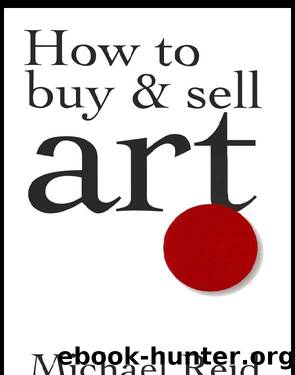How to Buy & Sell Art by Michael Reid

Author:Michael Reid
Language: eng
Format: epub
Tags: ART000000, ART000000
ISBN: 9781741151664
Publisher: Allen & Unwin Pty Ltd
Published: 2004-06-30T16:00:00+00:00
Art politics
I shall digress for a brief moment into the murky world of art politics, for that beast is only too alive and thriving in the art auction houses.
The world of work is marinated in politics. Working with others is for many nothing short of a Machiavellian danceâand a none-too-subtle one at that. Having worked on the land, in finance, academia, the law, the media and in the art market, it has been my observation that no other profession comes close to the arts industry in terms of the sheer time-consuming venom that is office politics.
After decades of observation, I have developed a theory as to possibly why this is so.
In the arts industry the name of the game is empire-building. It is not so everywhere else. In the world of finance, for example, individuals can be highly paid. Although many in the city may well hate their job, they know they are well paid for what they do. They compensate for the dull grind of the profit sector by engaging in a little letting-off-steam or regular retail therapy. In the CBD you see this category of existence all the timeâangry faces, brisk strides and a clutch of shopping bags heading back to office. This phenomenon can be understood to be immediate, short term, cash and credit driven, work place stress-release in action.
Aside from the financial stress redistribution that is significant discretionary income, city folk, through their regular wage and bonus reviews, know exactly where they stand professionally at any time in relation to others in their industry. In the finance industry, employees can differentiate between themselves and others by looking to the money they earn. The, âI earn tens of thousands of dollars more than that person, this one earns much more than Iâ, kind of thing. A financial hierarchy of recognised worth is based purely on a combination of salary and a bonus.
This hierarchy of worth formulated as it is on a combination of salary and a bonus is regularly calibrated through remuneration reviews, which act as a strong performance indicator. You receive a big bonus; therefore, you are achieving. You donât receive a bonus; therefore, you are not achievingâall very cut and dry.
By contrast, few people in the arts industry are well paid, and the salary bands that could serve to divide and highlight a colleagueâs station come relatively all bunched together. Unless you are a trust fund baby, few can engage in retail therapy to lessen the woes of a hard job-slog day. As in many industries, a drought of discretionary income builds much professional frustration. The all-too-familiar cry of arts industry employees is: âWhen will I ever be able to afford to buy a house in Sydney on a salary of $36 000?â However distressing this may be, itâs not the specific arts-related workplace problem that I am concerned with.
In the arts industry, as salary increases (God forbid) are generally nothing more than the cost of inflation and the whole idea of a bonus is
Download
This site does not store any files on its server. We only index and link to content provided by other sites. Please contact the content providers to delete copyright contents if any and email us, we'll remove relevant links or contents immediately.
Wonder by R.J. Palacio(8430)
Mastering Adobe Animate 2023 - Third Edition by Joseph Labrecque(3720)
Unlabel: Selling You Without Selling Out by Marc Ecko(3574)
Ogilvy on Advertising by David Ogilvy(3485)
Hidden Persuasion: 33 psychological influence techniques in advertising by Marc Andrews & Matthijs van Leeuwen & Rick van Baaren(3454)
Drawing Cutting Edge Anatomy by Christopher Hart(3440)
The Pixar Touch by David A. Price(3347)
POP by Steven Heller(3298)
The Code Book by Simon Singh(3057)
The Art of War Visualized by Jessica Hagy(2932)
Slugfest by Reed Tucker(2924)
The Curated Closet by Anuschka Rees(2897)
Rapid Viz: A New Method for the Rapid Visualization of Ideas by Kurt Hanks & Larry Belliston(2815)
Stacked Decks by The Rotenberg Collection(2796)
365 Days of Wonder by R.J. Palacio(2737)
The Wardrobe Wakeup by Lois Joy Johnson(2717)
Keep Going by Austin Kleon(2682)
Tattoo Art by Doralba Picerno(2583)
Tell Me More by Kelly Corrigan(2579)
